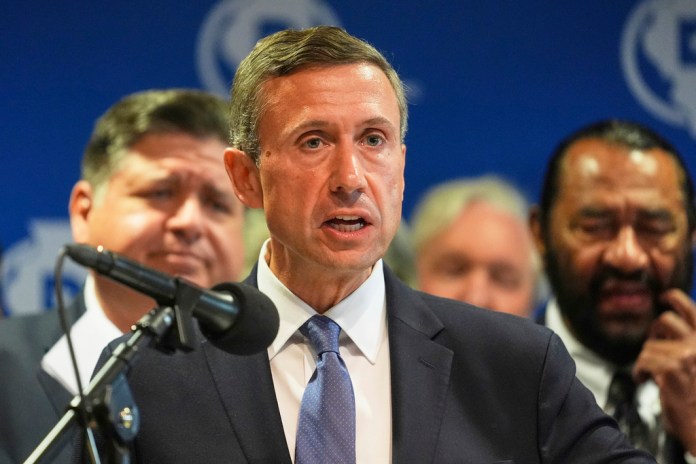Syrian Civil War reignites after four years with surprise rebel offensive, drawing Russia in – Washington Examiner
The Syrian Civil War has intensified after four years of relative calm, ignited by a surprise offensive from a coalition of rebel forces led by Hay’at Tahrir al-Sham (HTS), a group designated as a terrorist organization by the United States. The rebels launched a significant attack against the Syrian government, particularly near Aleppo, showcasing advanced warfare tactics similar to those seen in Ukraine and Nagorno-Karabakh, including the use of drones and heavy weaponry.
The offensive marks a crucial shift, as it was previously believed that the Syrian government, led by President Bashar al-Assad, had consolidated control since fighting subsided in 2020. Experts note that this resurgence of rebel capabilities indicates a significant improvement in their military organization and tactics. The assault resulted in heavy casualties on both sides and prompted retaliatory airstrikes from the Assad regime and Russian forces.
The situation is complicated further by the current geopolitical landscape, as the Assad regime’s key allies, Russia, Iran, and Hezbollah, are distracted by their own challenges, suggesting the rebels may have perceived it as an opportune moment to act. Despite the intensity of the offensive, a Turkish security source indicated that the operation began with limited objectives but expanded rapidly as government forces retreated. The dynamics of the conflict could be changing dramatically, with implications for the region’s stability.
Syrian Civil War reignites after four years with surprise rebel offensive, drawing Russia in
The Syrian Civil War reignited after four years of docility when a rebel coalition launched a surprise offensive against Syrian government positions outside of Aleppo.
Hay’at Tahrir al-Sham (HTS), recognized as a terrorist group by the United States, and allied militias launched the first major offensive after four years of relative quiet, routing Syrian government forces of Syrian President Bashar al-Assad. Videos posted by the group showed a litany of captured equipment, including tanks, armored vehicles, small arms, drones, and even equipment from a Russian special forces unit.
The offensive was carried out by well-armed rebel troops manning tanks, armored vehicles, and trucks mounted with heavy weapons. Also in line with advanced tactics shown in Ukraine and Nagorno-Karabakh, the rebels also made heavy use of mass-produced kamikaze drones.
“In the matter of about 10 hours, a wide spectrum of armed opposition groups have managed to get to within about four or five kilometers now of Aleppo city, which is of gigantic significance,” Charles Lister, the director of Middle East Institute’s Syria and counterterrorism programs, said on Wednesday, according to the New York Times.
The offensive was particularly surprising, as Assad’s hegemony over the country had been largely established since fighting died down in 2020. Lister speculated that the ability of rebel forces to break through Syrian government lines showed a vast improvement of its capabilities over the past few years.
“Years ago, an offense of this size would have been pushed back by the regime,” he said, adding that HTS invested heavily in resources and training for night operations. “That basically levels the playing field.”
HTS and its allies reached the outskirts of Aleppo after routing government forces.
According to the Syrian Observatory for Human Rights, at least 65 HTS members and 18 allied militiamen were killed, compared to 49 Syrian government forces killed.
The Assad government and Russian air force responded with extensive airstrikes against Idlib and other rebel positions.
The offensive notably occurred on the same day that Israel and Hezbollah signed a ceasefire. The Assad regime is closely allied with Russia, Iran, and Hezbollah, with each playing a decisive role in saving the regime, particularly in the early days of the war. With Russia embroiled in its War in Ukraine, Hezbollah decapitated and battered by the Israel Defense Forces, and Iran struggling with domestic issues and international prestige loss, the rebels likely saw an ideal time to strike.
A Turkish security source told Middle East Eye that the offensive is limited in scope.
“What was initially planned as a limited operation expanded as regime forces began fleeing their positions,” they said.
Turkey is suspected to have ties with HTS and the linked Syrian Salvation Government, though official relations extend mainly to security cooperation.
HTS is the successor of the Al-Nusra Front, Syria’s Al-Qaeda affiliate which came to dominate the Syrian rebel forces. The current leader of HTS, Ahmed Hussein al-Shar’a, was also the leader of the Al-Nusra front.
In recent years, the group has aimed to moderate its image to win international support, even purging itself of more overt pro-Al Qaeda elements. The United States and most other international bodies haven’t bought it.
In its Foreign Terrorist Organization, the U.S. noted that HTS is a “vehicle to advance [al-Qaeda’s] position in the Syrian uprising and to further its own goals,” while the United Nations cited several state intelligence services in claiming that HTS “and its components still maintain contact with Al-Qaeda leadership.
After years of losses, the Syrian Civil War turned heavily in Assad’s favor in 2014 with the large-scale intervention of Russia. Once teetering on the brink of collapse, the government went on to retake control of the entire country aside from the U.S.-controlled area in the southeast, Kurdish territory in the north, the Islamist rebel-controlled areas in Idlib, and a strip in the north controlled by Turkish-backed rebels.
Fighting largely ceased after a March 2020 ceasefire, broken only by occasional Syrian government and Russian airstrikes.
" Conservative News Daily does not always share or support the views and opinions expressed here; they are just those of the writer."




